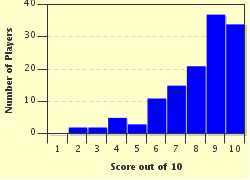Quiz Answer Key and Fun Facts
1. Let's start with a classic, what nut from the prunus amygdalus tree is ground into a meal or flour mixed with sugar to make marzipan?
2. Considered by many as a precursor to the modern baklava, güllac is a Turkish desert made from what nut?
3. Also called the Queensland Nut, what tree nut, used in cookies, candies and oils, is closely associated with the Hawaiian Islands?
4. Botanically speaking coconuts are not really nuts but are drupes.
5. Some nuts just create joy wherever they go. What drupaceous nut with a green colored seed is used in ice cream, baklava, cookies, cakes and candies and is known as the smiling nut in Iran and the happy nut in China?
6. What nut is used to flavor the Italian liqueur Frangelico and the chocolaty spread Nutella?
7. Famous in the American South for its use in gooey pies, what nut was a staple of North America's indigenous populations and whose name when translated from the Algonquin language means "nut needing a stone to crack"?
8. The most popular nut is actually a legume. What nut is really a bean?
9. What tree nut is high in vitamin C, has no gluten, is low in fat and was immortalized in 1946's "The Christmas Song"?
10. What do Grape-Nuts, Corn nuts and water chestnuts have in common?
Source: Author
adam36
This quiz was reviewed by FunTrivia editor
WesleyCrusher before going online.
Any errors found in FunTrivia content are routinely corrected through our feedback system.

